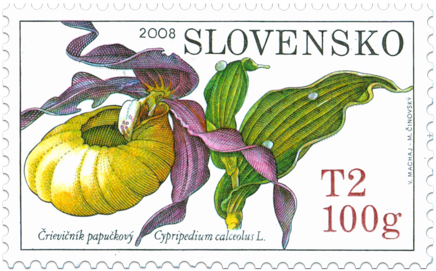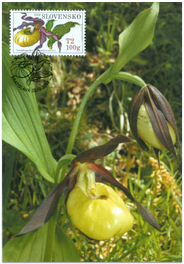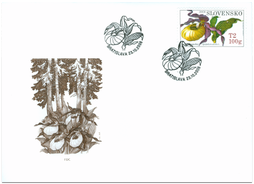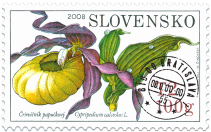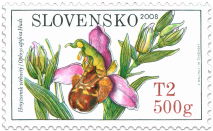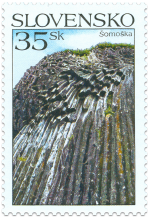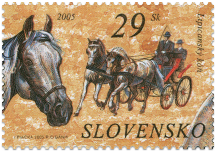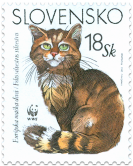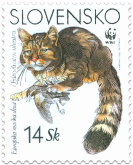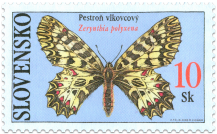431 Date of issue
23.10.2008 Face value
1.10 € Sell price
1.10 €
T2 100 g responds to the rate of postage of the 2nd class up to 100 g - domestic servis. © Slovak Post, 2008 Within the territory of Slovakia, this genus is represented by only one species. At the same time, it is the only representative of the Cypripedioidae subfamily in Slovak flora. The great majority if this genus is to be found in Asia and North America, comprising about 20 species. C. calceolus measures up to 60 cm with a creeping rootstalk, from which a stem sprouts with 3-5 alternate and 4-7 cm wide lanceolate leaves, and typically only one flower which usually opens from the end of May until June (sometimes, though rarely, the plant may also have two or three flowers). Thanks to the exceptional variety of colour and shape, the flower has become the motif of this stamp. It is one of our most bizarre wild plants in terms of shape. The flower inside the bud resupinates; as the flower opens its labellum (slipper) initially directed upwards turns upside-down to a normal position. Apart from the flower shape, pollination used by this flower is also very interesting. The insect is enticed into the flower by the yellow colour of the labellum. At its visit, the insect falls inside, and since the surface of the surrounding walls is slippery and the edge folded inside, it gets imprisoned inside the flower. The only way out is the opening at the back of the slipper, whereby the pollen gets glued onto the body of insect. During a subsequent visit to another flower, the insect has to get through the slipper in the same way, thereby depositing the pollen from the previous visit directly onto the flower’s stigma. Since the flower does not offer any nectar and the insect has practically no use for it, the flower is also called a deceptive orchid. The species can usually be found on the foothills or mountains of Northern Slovakia. It prefers limy soils, deciduous forests, especially oak and beech, but it may also, though rarely, occur in conifer forests, edges of forests, and shrubby hillsides. Since the species is rather salient, it is susceptible to flower-picking by tourists and digging by gardeners. The flower is also threatened by the destruction of biotopes and changes in the wood composition of forests. This has already led to the extinction of this species in several locations. Therefore, it is protected by law, listed in the Red Slovak Red List of Plants and Animals, and subject to conservation based on the CITES convention. Jaromír Kučera
Show lessSimilar products
432 Date of issue
23.10.2008
394 Date of issue
18.04.2007
395 Date of issue
18.04.2007
373 Date of issue
21.04.2006
374 Date of issue
21.04.2006
360 Date of issue
30.06.2005
361 Date of issue
30.06.2005
302 Date of issue
25.06.2003
301 Date of issue
25.06.2003
299 Date of issue
25.06.2003
300 Date of issue
25.06.2003
267 Date of issue
26.06.2002
© 2024 POFIS - Postal philatelic service. All rights reserved

